If you want to take your lettuce garden to the next level, you’ve come to the right place! Companion planting is an age-old strategy used in gardening that can create a thriving ecosystem in your garden. By combining certain companion plants with your lettuce, you can reap the rewards of improved soil fertility, pest control and weed suppression – all while enjoying mouth-watering salads! Read on for our guide to winning companion plants for lettuce and discover how you can supercharge your garden’s success.
What Are the Benefits of Companion Planting?
Companion planting is a great way to optimize the growth of your lettuce. It’s also an excellent way to save space in the garden and make sure that your plants are getting all of the nutrients they need to grow strong and healthy.
Repel insect pests
One of the main advantages of companion planting is that it can help to repel insect pests.
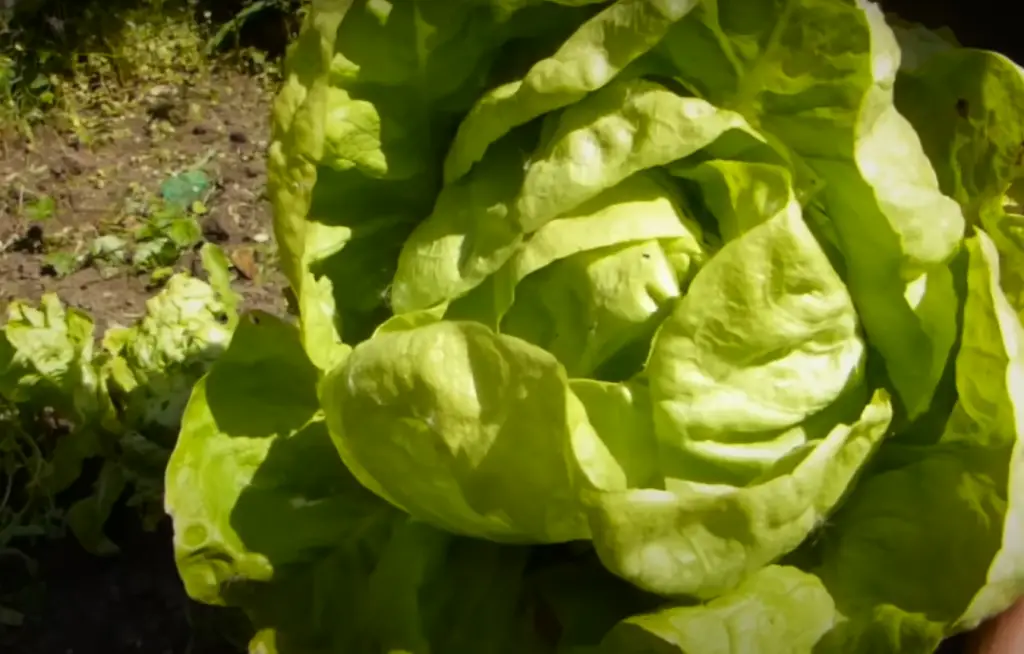
Certain plants, such as marigolds and nasturtiums, naturally secrete oils which act as natural repellents for a variety of insects that may be attracted to lettuce.
Attract beneficial insects
In addition to deterring pests, companion planting can also encourage beneficial insects like bees, butterflies, and ladybugs into your garden. These are great allies in keeping harmful bugs at bay while helping to pollinate your plants so they produce more fruits and vegetables.
Improve soil fertility
Some companion plants will improve soil fertility by helping to break down organic matter and releasing essential nutrients into the soil. For instance, clover and alfalfa will fix nitrogen in the soil while beans will add phosphorus to support better root growth.
Encourage faster growth and better taste
By planting companion plants alongside your lettuce, you can increase the amount of sun and air circulation they get. This will help them grow faster and taste better than if they were competing with other plants for resources.
Provide ground cover
Companion planting can provide ground cover to protect the soil from sun and wind damage. This helps to keep moisture in the soil so your plants can thrive even during dry weather.
Provide necessary shade
Some lettuce varieties do best in partial shade, so companion planting can provide the necessary protection from intense sunlight. For instance, tomatoes are great for providing a bit of shade while also adding nitrogen to the soil.
Serve as markers
Finally, companion planting can help you to keep track of which plants are where in the garden. This can be especially helpful if you’re growing several varieties of lettuce or other vegetables that may look similar.
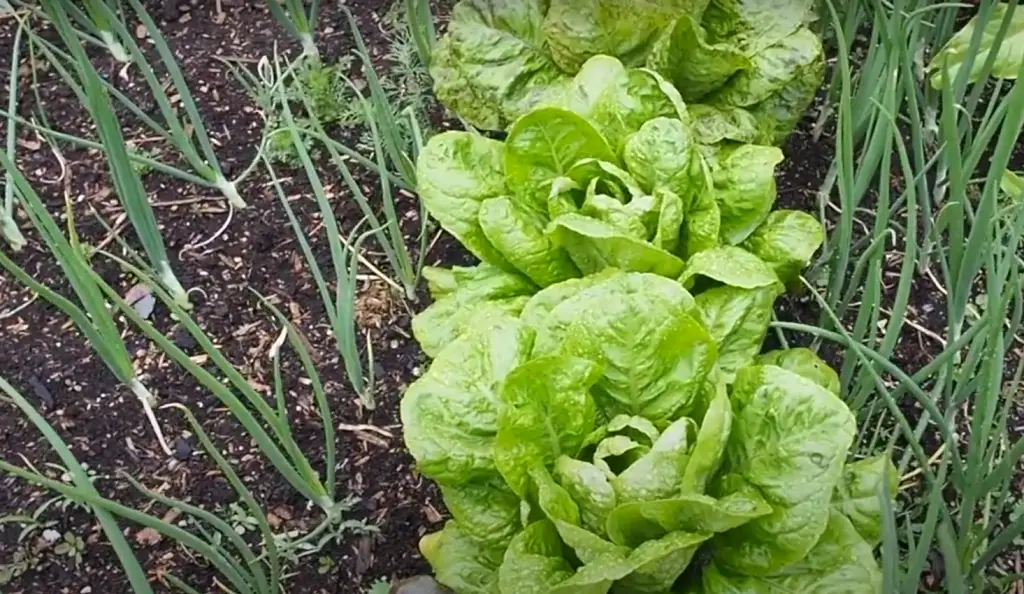
Overall, companion planting is a great way to get the most out of your lettuce and encourage optimal growth. With careful planning and a few strategically placed plants, you can enhance the flavor and yield of your lettuce and maximize the benefits of companion planting.
Companion Plants to Grow Alongside Lettuce
When growing lettuce, it’s best to choose companion plants that can help create a thriving garden. Here are some great options for companion planting with lettuce.
Asparagus
Asparagus is a great companion plant for lettuce. Asparagus helps to repel certain types of beetles, which can be beneficial in keeping your lettuce safe from harm. Asparagus also provides a natural form of shade for the lettuce, helping to keep it cool and hydrated during the hot summer months. Additionally, asparagus produces nitrogen-rich compounds that help to boost growth and vigor in both plants! When planting asparagus alongside your lettuce, make sure to give them plenty of space so they have enough room to grow without competing for resources. You’ll want to harvest asparagus before it goes too far along in its life cycle or else you’ll find yourself with a big mess on your hands!
Beets
Beets are a perfect companion to lettuce. They help keep pests away and they also provide essential nutrients.
This will prevent competition for light, water, and nutrients between the two plants. If you want to maximize the benefits of planting beets with lettuce, use early maturing varieties such as ‘Early Wonder’ or ‘Little Ball’. These will mature before your lettuce, meaning they’ll have a higher chance of completing their growth cycle without any issues from the growing lettuce.When harvesting your beets, avoid damaging your adjacent lettuce plants in the process. Carefully remove the entire plant from its roots, taking care not to damage any other plants in the process. Doing so will ensure your lettuce is safe and unharmed during the harvest season.
Calendula
Calendula, also known as Pot Marigold, is a popular companion plant for lettuce. This bright-colored annual flower will not only add cheer to the garden but has some valuable benefits. Calendula helps repel troublesome pests like aphids and whiteflies. It’s also said to have antifungal properties, so planting it near your lettuce could help protect against disease. A bonus? The flowers of calendula are edible! Add them to salads or try using them in place of saffron for a more affordable alternative.
Carrots
Carrots are a great companion for lettuce! Their deep-rooted growth habit helps to aerate the soil, which in turn allows more air and oxygen to reach your pupating lettuces. Carrots also deter cabbage root flies that can decimate a crop of baby greens. Additionally, carrots offer some protection from harmful nematodes. Planting carrots with lettuce can prevent the spread of this destructive little pest – just make sure your carrots are far enough away from other brassicas like cabbages or kale so they don’t attract the cabbage root fly! Be aware though, if you let carrots go to seed they will cross-pollinate with any nearby lettuces, hybridizing them and making it difficult to save viable seeds for future harvests. So be sure to keep your carrots and lettuce separated!
Chervil
Chervil is a delicate, annual herb that can be used in salads, soups, and other dishes. It grows well with lettuce and adds a slight anise flavor to the dish. This plant does very well in cooler temperatures and partial shade, so it’s great for cooler climates or shady gardens.
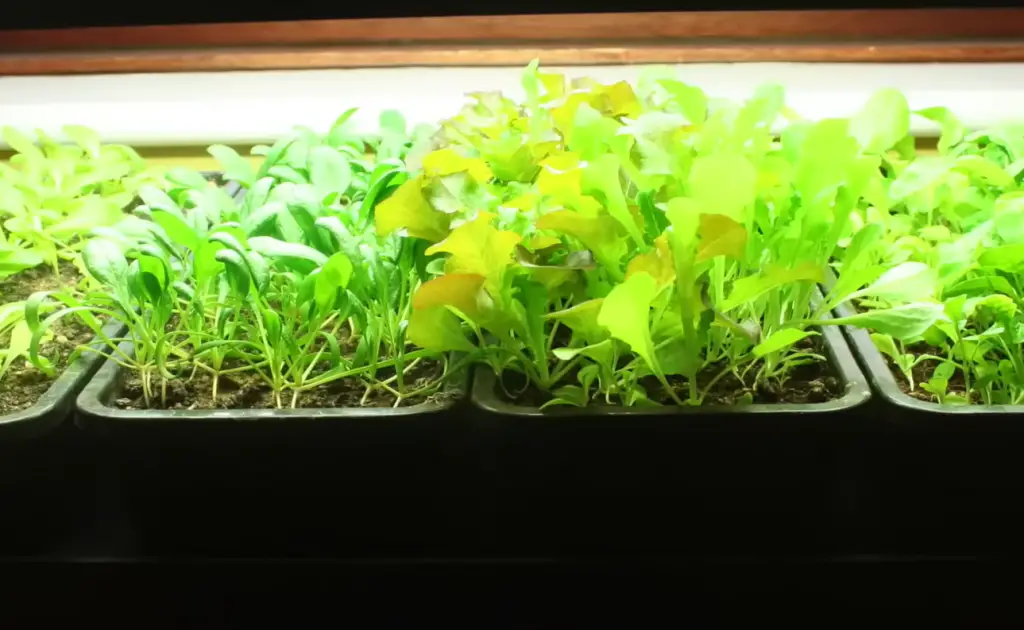
Plant chervil near your lettuce plants to benefit from its natural pest repellant properties as well as the added flavor it will bring to your meals! Just remember that you have to replant it every year since it’s an annual herb.
Chives
Chives are a great companion plant for lettuce, as they help keep away some of the pesky bugs that like to munch on your greens. In addition, chives provide an allium-rich flavor to any salad or dish. It’s easy to grow and requires minimal care – just cut it back when it starts looking too tall. Planting chives near your lettuce can do wonders for the health of your crop! Just remember not to let them take over, as this could block out light and air circulation for other plants in the garden. Be sure to give them their own space so they don’t compete with each other for nutrients and water.
Another beneficial quality of chives is that they naturally repel aphids, a common pest which can cause damage to lettuce and other plants. With chives in your garden, you’ll likely be able to avoid this problem altogether! Chives are also an excellent source of vitamins and minerals that can help promote healthy growth for all your favorite lettuces. So put some chives in the ground near your lettuce bed – you won’t regret it!
Cilantro
Cilantro is one of the best companions for lettuce. It deters certain pests, like aphids and spider mites, from attacking your lettuce crop. It also has a strong aroma that helps to repel many common garden bugs. Plus, cilantro flowers attract beneficial insects such as ladybugs and bees which help with pollination and pest control. Cilantro grows well in cooler weather so it’s an ideal companion plant for lettuce during spring or fall gardening seasons. Just be sure to give your cilantro plants plenty of space since they can grow up to two feet tall! Also keep in mind that cilantro doesn’t tolerate high temperatures very well, so avoid planting it near areas of direct sunlight when summer arrives.
Eggplant
Eggplant is a great companion plant for lettuce. It produces lots of nitrogen-rich foliage, which helps to fertilize the soil around the lettuce and encourage healthy growth. The two plants also take up different amounts of water from the soil, so they won’t compete with each other for resources. When planting them together, make sure to give them extra space to spread out in order to maximize their yields.
Finally, eggplant’s dark purple color makes it an attractive addition to any garden bed. So if you’re looking for a reliable companion plant for your lettuce, consider adding some eggplants as well!Garlic
Garlic is an excellent companion plant for lettuce. Not only does it repel pests, but it can also help sweeten the taste of any salad. Garlic plants should be planted in between rows of lettuce and spaced evenly apart to ensure that their strong scent doesn’t overwhelm the leaves. Additionally, because garlic has a shallow root system, it won’t compete with lettuce for nutrients or water.
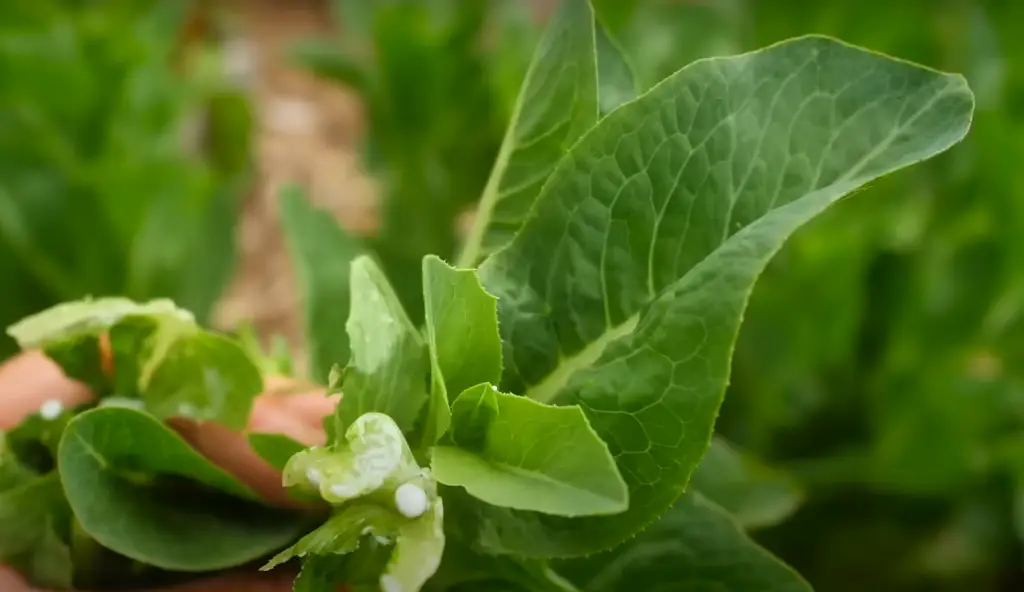
To maximize the benefits of garlic as a companion plant, you should use organic fertilizer once every few weeks. Harvesting your garlic after six months will also allow more nutrients to reach the lettuce roots. Finally, don’t forget to mulch around your garlic and lettuce beds to preserve moisture and prevent weeds from taking over your garden. With a bit of care and attention, garlic can be an invaluable asset to any lettuce garden.
Mints
Mints (such as spearmint and peppermint) make help to repel many common pests, including aphids, ants, and flea beetles. Mints also attract beneficial insects such as ladybugs and hoverflies that will help protect your lettuce from damage caused by harmful insects. Planting mints alongside your lettuce can increase the health of your crop while adding a nice fragrance to your garden. Just be sure not to let them get too big or they may start crowding out other nearby plants!
Melons and squash
Melons and squash (Cucurbitaceae) are great companion plants for lettuce. They can provide shade to the delicate lettuce leaves, protecting them from direct sunlight and extreme temperatures. Squash in particular is known to repel pests that may be attracted to lettuce. If planted together, melons and squash will also help improve soil fertility by adding nutrients with their deep roots. When planting melons and squash alongside your lettuce, make sure they have enough room to spread out so they don’t crowd each other out. And if you plan on harvesting all of the fruits and vegetables from the same patch of land, keep in mind that melons require a longer growing season than most other crops do. You may want to stagger your planting times if this is the case. With thoughtful planning and proper care, melons and squash make great companion plants for lettuce!
Nasturtiums
Nasturtiums are often considered to be the perfect companion for lettuce. Not only do they provide a beautiful and edible flower for decoration, but they also act as a natural pest repellent. Planting nasturtiums around your lettuce will help protect it from aphids, beetles, and other pesky garden critters. The leaves of nasturtiums can also be used in salads or as an herbal tea; however, their flowers should not be consumed if you’re pregnant.
Onions and shallots
Onions and shallots are great companion plants for lettuce. Their strong scent helps ward off pests, while their deep root systems help loosen the soil and make it easier for other plants to grow. Plant them close enough to your lettuce so that their protective scent reaches the leaves. Both onions and shallots require lots of sun and should be planted in an area that gets at least 6 hours of direct sunlight each day. Be sure to provide proper spacing between plantings — up to 8 inches apart is ideal. For best results, water the onions or shallots regularly but not too much; they tend to do better when kept slightly on the dry side. Finally, keep any weeds away from these companion plants as they can compete with them for nutrients.
Parsnips
Parsnips grow quickly and help keep away pests from the lettuce. They also provide a light shade in hot weather, which helps prevent the leaves of lettuce from wilting. Parsnips should be planted at least 6 inches away from lettuce plants to ensure that they have enough room to grow properly. When planting parsnips alongside lettuce, it is important to make sure that you water them regularly as they require more moisture than other types of vegetables.
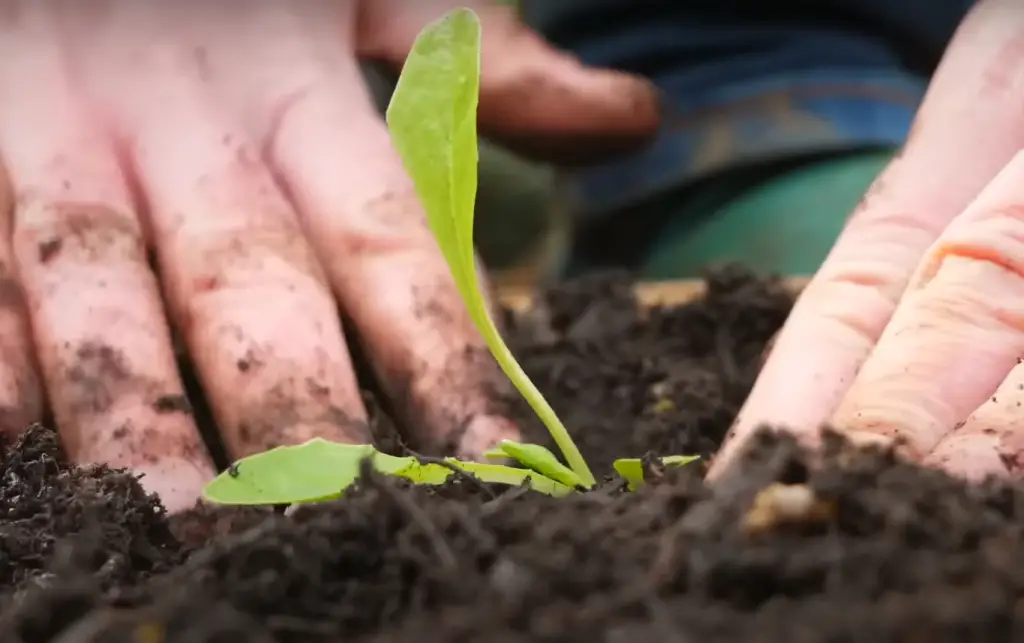
Additionally, when harvesting parsnips, try not to disturb or damage the roots of your lettuce plants in order to avoid any unintended consequences on their growth. If you follow these tips, you can expect a bountiful crop!
Radishes
Radishes are a great companion plant for lettuce. They help to improve the flavor of lettuces and provide extra protection from pests. Radishes can also be used as a trap crop, as they are attractive to some insects that might otherwise attack your lettuce plants. Planting radish seeds around the perimeter of your lettuce bed will draw away insects and give your lettuce more room to grow. The radishes will also act as a natural fertilizer for the soil around the lettuces, making them even healthier!
And don’t forget to harvest your radishes before they get too big or else you won’t have any room for your lettuce plants! With a little careful planning, you can enjoy delicious lettuce and radishes all season long.Turnips
Turnips help to protect lettuce from flea beetles. Plant turnips around the perimeter of your lettuce patch, and keep them well watered throughout the growing season. They can also benefit from light shade in warmer climates. The leaves offer some protection from the sun, but won’t block out essential sunlight for your lettuce plants. Additionally, the turnip roots can attract beneficial predators that will help to decrease the number of pests attacking your lettuce crop. Just be sure to rotate crops each year so you don’t deplete any nutrients in your soil. With proper planting and care, turnips make an excellent addition to any garden!
Plants to Avoid Growing With Lettuce
When deciding which companion plants to grow alongside your lettuce, some plants should be avoided.
Crops in the cabbage family
Crucifers like cabbage, broccoli, and Brussels sprouts should not be planted near lettuce as they will compete for space and nutrients.
Fennel
Fennel will attract aphids, which can cause damage to your lettuce. [1]
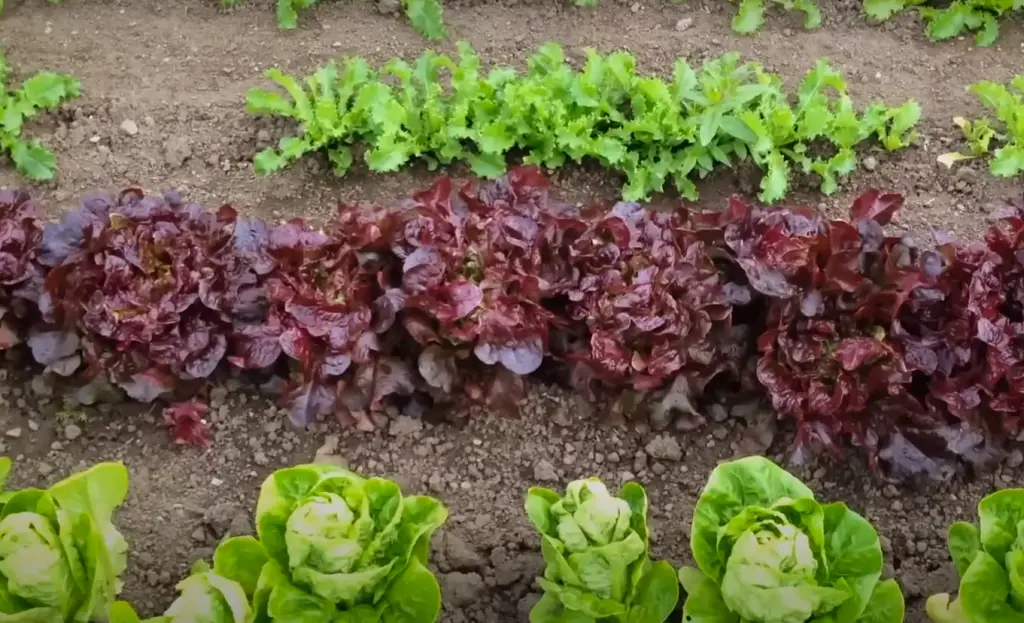
Fortunately, there are plenty of other companion plants you can choose from that won’t have any negative effect on your lettuce crop. With a little research and knowledge about what works best for your climate and soil, you’ll be able to create the perfect growing conditions for both your lettuce and its companion plants!
FAQ
What is the best companion plant to grow with lettuce?
Growing lettuce alongside root crops such as radish, carrot, parsnips, or beets is recommended for optimal growth. Additionally, other plants such as beans, cucumbers, and onions are also great companion plants for lettuce. These vegetables can help keep pests away from your lettuce patch while providing additional nutrition to the soil. Finally, basil, thyme, and mint are all herbs that make excellent companions to lettuces as they repel certain insect pests. As an added bonus, many of these herbs will also add flavor to your salads! [2]
What should you not plant next to lettuce?
When planting companion plants for lettuce, it’s important to be aware of some plants that should not be planted next to lettuce. These are plants that can either stunt the growth of lettuce or have a negative impact on its flavor. Here is a list of some plant companions you’ll want to avoid planting near your lettuce. [3]
It’s not recommended to plant lettuce alongside broccoli, brussels sprouts, cabbage, cauliflower, kale, or kohlrabi. These vegetables can stunt the growth of lettuce, leading to a poor harvest. Planting fennel and garlic near lettuce can also have a negative effect on the flavor of the lettuce.
Can you grow lettuce and basil together?
Yes, you can absolutely grow lettuce and basil together. In fact, it’s a great combination that offers many benefits. Both lettuces and basil add flavor to salads and sandwiches while also providing health benefits like vitamins A and C. Basil helps deter pests from the lettuce plants, while the shade provided by the tall basil foliage protects the lettuce from too much sun exposure. The two plants also help each other out when it comes to soil nutrients – lettuce adds nitrogen to the soil, which is beneficial for basil growth. When planted close together in a container or garden bed, they make an attractive and practical pairing. Just be sure not to overcrowd them as both need enough air circulation for healthy growth! [4]
What can I plant with green leaf lettuce?
Green leaf lettuce is a popular garden crop and many companion plants thrive when planted near it. Consider these companions that can be interplanted with green leaf lettuce:
- Peppers: Peppers are a great companion for green leaf lettuce as they help to repel certain pests, like aphids. Lettuce and peppers enjoy the same growing conditions.
- Corn: Corn and lettuce both prefer cooler temperatures, so they make great companions. Planting corn with green leaf lettuce can help support the growth of both crops by providing a steady source of nitrogen in the soil.
- Tomatoes: Tomatoes are a popular companion for many garden plants, including green leaf lettuce. The tomatoes repel certain pests and provide shade for the young lettuce leaves. [5]
When planting these companion plants near your green leaf lettuce, just remember that different varieties may require different spacing and care needs, so make sure you research them before getting started!
Useful Video: companion planting lettuce
Conclusion
Companion planting is a great way to help your lettuce (and other plants) thrive in your garden. It can also be an easy and economical way to help control pests, reduce diseases, and boost soil fertility. When deciding which companion plants to choose for lettuce, think about what will work best for you. Different climates may require different types of companion plants so make sure to do some research before selecting the perfect ones for you! And don’t forget that even though certain plants provide beneficial effects when planted with lettuce, it’s still important to keep an eye on them as they grow and develop in order to ensure their health and yours! Happy gardening!
References:
- https://www.masterclass.com/articles/lettuce-companion-planting-guide
- https://www.epicgardening.com/lettuce-companion-plants/
- https://www.masterclass.com/articles/lettuce-companion-planting-guide
- https://savvygardening.com/basil-companion-plants/
- https://gardenerspath.com/plants/vegetables/grow-leaf-lettuce/





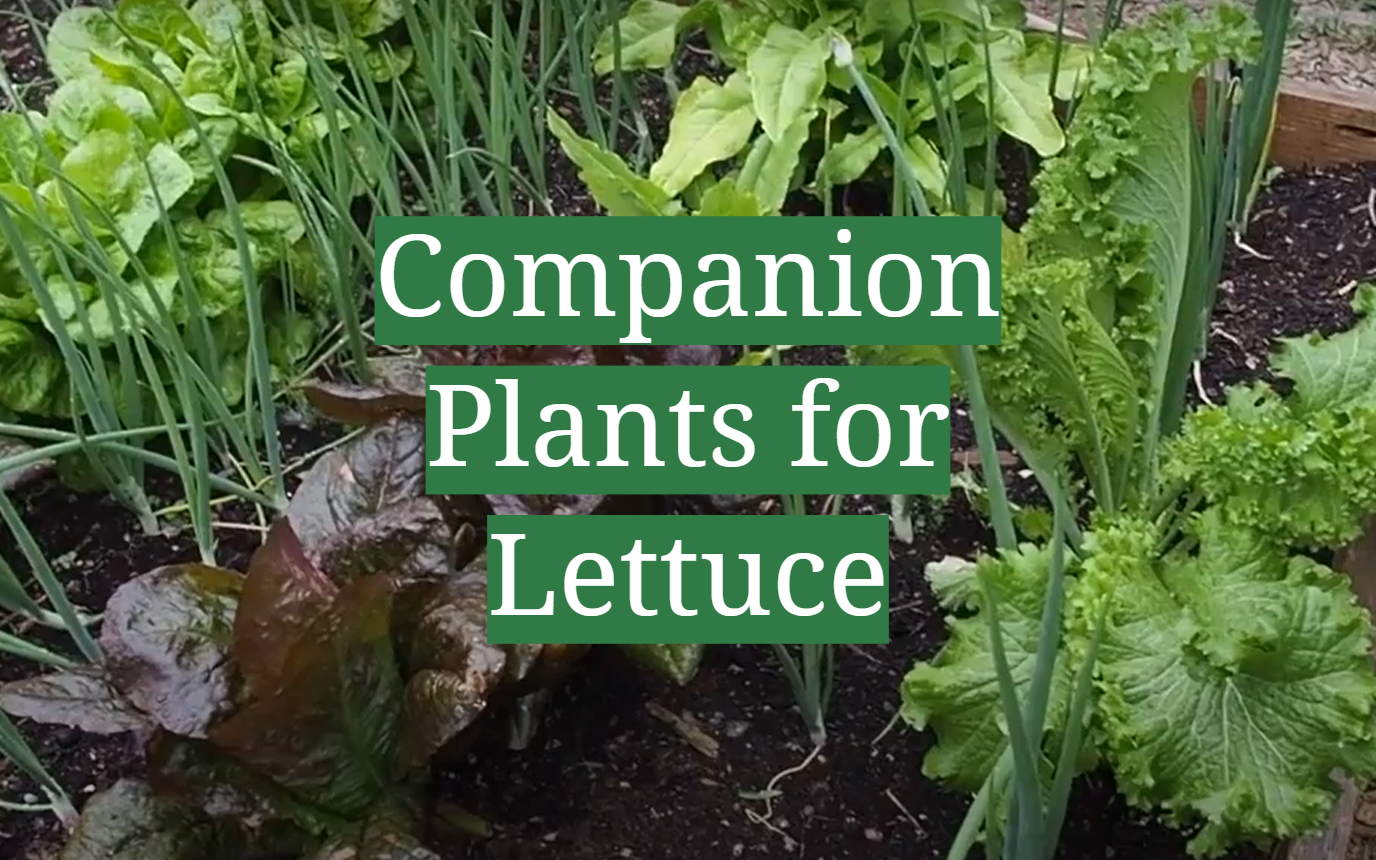




Leave a Reply
View Comments